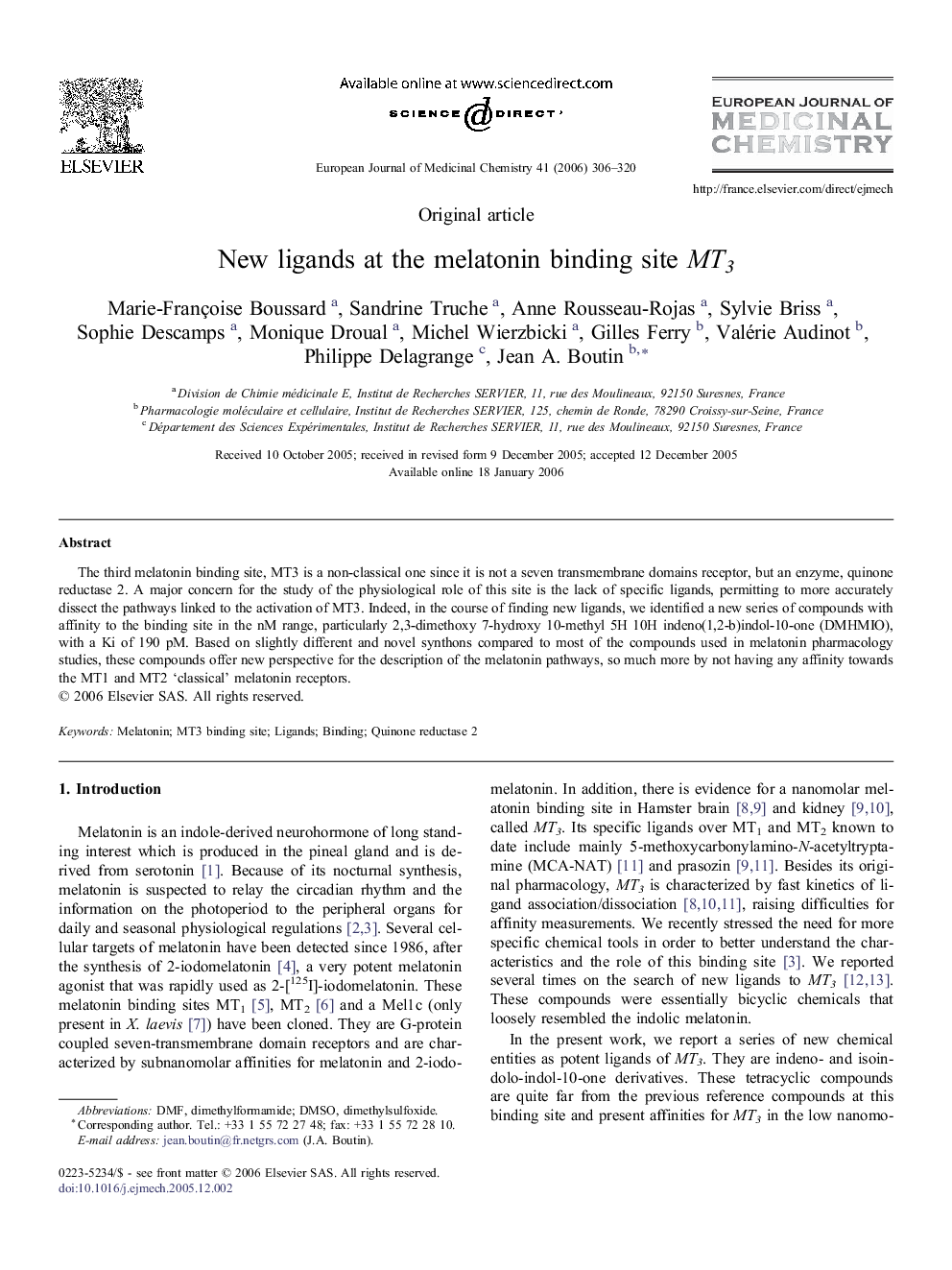| Article ID | Journal | Published Year | Pages | File Type |
|---|---|---|---|---|
| 1398279 | European Journal of Medicinal Chemistry | 2006 | 15 Pages |
The third melatonin binding site, MT3 is a non-classical one since it is not a seven transmembrane domains receptor, but an enzyme, quinone reductase 2. A major concern for the study of the physiological role of this site is the lack of specific ligands, permitting to more accurately dissect the pathways linked to the activation of MT3. Indeed, in the course of finding new ligands, we identified a new series of compounds with affinity to the binding site in the nM range, particularly 2,3-dimethoxy 7-hydroxy 10-methyl 5H 10H indeno(1,2-b)indol-10-one (DMHMIO), with a Ki of 190 pM. Based on slightly different and novel synthons compared to most of the compounds used in melatonin pharmacology studies, these compounds offer new perspective for the description of the melatonin pathways, so much more by not having any affinity towards the MT1 and MT2 ‘classical’ melatonin receptors.
Graphical abstractIsoindolo (2,1-a) indol-10-ones and indeno (1,2-b) indol-10-ones from 1-(2-nitro-benzylidene)-phtalides: source of new melatonin binding site MT3 ligands.Figure optionsDownload full-size imageDownload as PowerPoint slide
